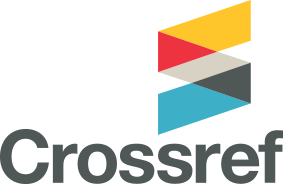Perbandingan Kadar Kortisol dan Rasio N/L (Neutrofil/Limfosit) Antara Lutung Jawa Jantan dan Betina di Kandang Sosialisasi
Abstract
Status sosial lutung Jawa pada satu kelompok dapat menyebabkan peningkatan stress. Primata dominan cenderung menunjukkan tingkat stress yang lebih rendah dibandingkan primata subordinat. Di tempat penangkaran kejadian ini sering muncul pada lutung Jawa di kandang pengelompokan. Dalam penelitian ini kandang tersebut adalah kandang sosialisasi yang merupakan kandang terakhir sebelum dilepaskan ke alam. Kelompok primata tersebut harus terbebas dari penyakit dan memiliki tingkat stres yang rendah agar mampu bertahan hidup. Tujuan penelitian ini adalah untuk melihat tingkat stres sebagai salah satu indikator kesiapan pelepasan lutung jawa yang diukur berdasarkan kadar kortisol serum dan rasio Neutrofil per limfosit darah. Lutung Jawa yang digunakan berasal dari pusat rehabilitasi satwa yang terletak di kota Batu. Rentang umur satwa yang digunakan adalah 2-10 tahun dengan jenis kelamin jantan dan betina. Kadar kortisol diukur menggunakan metode ELISA indirect gelombang 450 nm dan kadar neutrofil per limfosit diukur menggunakan hematology analyzer. Data yang didapatkan dianalisa secara deskriptif. Hasil penelitian didapatkan kadar kortisol rata-rata pada lutung betina sebesar 118.01 ng/mL sedangkan pada lutung Jawa jantan sebesar 117.04 ng/mL. Nilai rasio neutrofil per limfosit lutung jantan sebesar 5.43 dan betina sebesar 7.88. Kesimpulannya nilai kadar kortisol dan rasio neutrophil/limpfosit dikandang sosialisasi pada lutung jantan lebih rendah daripada lutung betina.
Keywords
References
Asri, K. (2017). Perbandingan Tingkat Stress Lutung Jawa Betina dengan mengukur Kadar Hormon Kortisol, rasio Neutrofil per Limfosit di Kandang Perawatan dan Kandang Karantina di Javan Langur Center (Skripsi). Malang: Universitas Brawijaya.
Cavigelli, S. A., Stine, M. M., Kovacsics, C., Jefferson, A., Diep, M. N., & Barrett, C. E. (2007). Behavioral inhibition and glucocorticoid dynamics in a rodent model. Physiology & Behavior, 92(5), 897–905. https://doi.org/10.1016/j.physbeh.2007.06.016
Danafi, E., Winarso, D., Swatomo, R., Fauzi, A., Masnur, I., Kurniawan, I., & Titisari, N. (2017). Perbedaan tingkat stres lutung jawa (trachypitecus auratus) pada kandang perawatan dan kandang karantina di javan langur center (Jlc) ditinjau dari kadar kortisol dan rasio neutrofil perlimfosit (N/L). TERNAK TROPIKA Journal of Tropical Animal Production, 18(2), 34–41. https://doi.org/10.21776/ub.jtapro.2017.018.02.6
Davis, A. K., Maney, D. L., & Maerz, J. C. (2008). The use of leukocyte profiles to measure stress in vertebrates: a review for ecologists. Functional Ecology, 22(5), 760–772. https://doi.org/10.1111/j.1365-2435.2008.01467.x
Dong-Dong, Q., Joshua, D. R., Xiao-Li, F., Xun-Xun, C., Shang-Chuan, Y., Chun-Lu, L., Xin-Tian, H. (2013). Social rank and cortisol among female rhesus macaques ( Macaca mulatta ). Zoological Research, 34(2), 42–49. https://doi.org/10.3724/SP.J.1141.2013.E02E42
Febriyanti, N. (2008). No TitleStudi Karakteristik Cover Lutung Jawa (Trachypithecus cristatus, geoffroy 1812) di Blok Ireng-Ireng Taman Nasional Bromo Tengger Semeru Jawa Timur (Skripsi). Bogor: Departemen Konserpasi Sumber Daya Hutan dan Ekowisata Fakultas Kehutanan Institut Pertanian Bogor.
Guyton, A., & Hall, J. (2008). Buku Ajar Fisiologi Kedokteran (11th ed.). Jakarta: EGC.
He, L., Wang, W.-X., Li, L.-H., Liu, B.-Q., Liu, G., Liu, S.-Q., Hu, D.-F. (2014). Effects of crowding and sex on fecal cortisol levels of captive forest musk deer. Biological Research, 47(1), 48. https://doi.org/10.1186/0717-6287-47-48
Hennessy, M. B., Kaiser, S., & Sachser, N. (2009). Social buffering of the stress response: Diversity, mechanisms, and functions. Frontiers in Neuroendocrinology, 30(4), 470–482. https://doi.org/10.1016/j.yfrne.2009.06.001
IUCN. (2017). The IUCN Red List of Threated Species: Trachypithecus auratus.
Kannan, G., Terrill, T. H., Kouakou, B., Gazal, O. S., Gelaye, S., Amoah, E. A., & Samaké, S. (2000). Transportation of goats: effects on physiological stress responses and live weight loss. Journal of Animal Science, 78(6), 1450–1457.
Kim, C.-Y., Han, J. S., Suzuki, T., & Han, S.-S. (2005). Indirect indicator of transport stress in hematological values in newly acquired cynomolgus monkeys. Journal of Medical Primatology, 34(4), 188–192. https://doi.org/10.1111/j.1600-0684.2005.00116.x
Kurniawan, I. (2012). Profil Progam Rehabilitasi Lutung Jawa. Malang: JLC Press.
Laudenslager, M. L., Jorgensen, M. J., & Fairbanks, L. A. (2012). Developmental patterns of hair cortisol in male and female nonhuman primates: lower hair cortisol levels in vervet males emerge at puberty. Psychoneuroendocrinology, 37(10), 1736–1739. https://doi.org/10.1016/j.psyneuen.2012.03.015
Meyer, J. S., & Hamel, A. F. (2014). Models of stress in nonhuman primates and their relevance for human psychopathology and endocrine dysfunction. ILAR Journal, 55(2), 347–360. https://doi.org/10.1093/ilar/ilu023
Miller, B. R., & Hen, R. (2015). The current state of the neurogenic theory of depression and anxiety. Current Opinion in Neurobiology, 30(1), 51–58. https://doi.org/10.1016/j.conb.2014.08.012
Montoya, E. R., Terburg, D., Bos, P. A., & van Honk, J. (2012). Testosterone, cortisol, and serotonin as key regulators of social aggression: A review and theoretical perspective. Motivation and Emotion, 36(1), 65–73. https://doi.org/10.1007/s11031-011-9264-3
Park, H.-K., Cho, J.-W., Lee, B.-S., Park, H., Han, J.-S., Yang, M.-J., Kim, Y.-B. (2016). Reference values of clinical pathology parameters in cynomolgus monkeys ( Macaca fascicularis ) used in preclinical studies. Laboratory Animal Research, 32(2), 79–86. https://doi.org/10.5625/lar.2016.32.2.79
Saltzman, W., Hogan, B. K., Horman, B. M., & Abbott, D. H. (2006). Social suppression of cortisol in female marmosets: Role of luteinizing hormone/chorionic gonadotropin. General and Comparative Endocrinology, 149(1), 90–99. https://doi.org/10.1016/j.ygcen.2006.05.007
Shively, C. A., Register, T. C., Friedman, D. P., Morgan, T. M., Thompson, J., & Lanier, T. (2005). Social stress-associated depression in adult female cynomolgus monkeys (Macaca fascicularis). Biological Psychology, 69(1), 67–84. https://doi.org/10.1016/j.biopsycho.2004.11.006
Smith, L. (2011). Neutrophil:Lymphocyte Ratio as a Possible Indicator of Chronic Anthropogenic Stress in Bats (Mammalia: Chiroptera) (Thesis). Graduate Faculty of Auburn University.
Surbeck, M., Deschner, T., Weltring, A., & Hohmann, G. (2012). Social correlates of variation in urinary cortisol in wild male bonobos (Pan paniscus). Hormones and Behavior, 62(1), 27–35. https://doi.org/10.1016/j.yhbeh.2012.04.013
Titisari, N., Fauzi, A., Masnur, I., & Kurniawan, I. (2012). Stress Level on Javan Langur (Trachypithecus auratus) During a Rehabilitation Program (2nd ed.). Yogyakarta: International Symposium of Global Physiology Gadjah Mada University.
Publication ID
DOI https://doi.org/10.21776/ub.jtapro.2019.020.01.5Refbacks
- There are currently no refbacks.

This work is licensed under a Creative Commons Attribution-NonCommercial 4.0 International License.










